|
|
 |
|
 |
 |
|
 |
 |
|
 |
 |
|
 |
 |
|
|
|
|
 |
 |
|
 |
 |
|
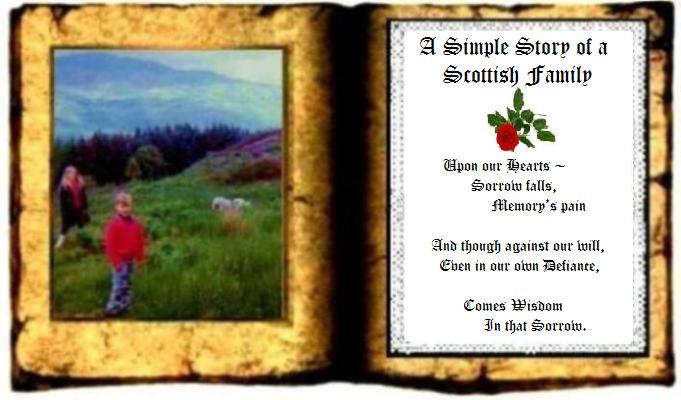
My
Special
Place ~ The Trossachs (Scottish Gaelic, Na Trosaichean) itself is a small woodland glen
in the Stirling area of Scotland. It lies between Ben An to the north and Ben Venue to the south, with Loch Katrine to the west and
Loch Achray to the east. However, the name is used generally to refer to the wider area of wooded glens and
braes with
quiet
lochs, lying to the east of Ben Lomond.
The
scenic charms of this area came to popularity when Walter Scott extended his romantic portrayal of Scotland's
past
from
border ballads to poems of a medieval past rich in chivalry and
symbolism, with his poem Lady of the Lake. This was followed up by his historical novel, Rob Roy. The Trossachs with my brother, Brett
and me, Karrie.
|
|
 |
 |
|
|
 |
 |
|
|
|
|
|
 |
 |
|
|
 |
 |
 |
 |
|
 |
 |
|
 |
 |
|
| THE CROSSANS ~ OUR LOVES AND OUR SORROWS |
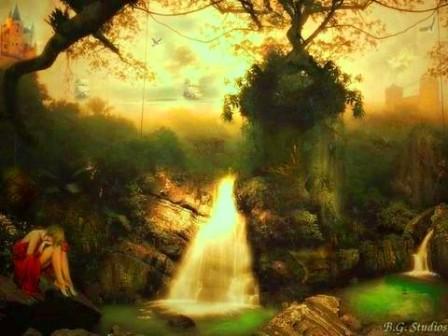
|
I woke up this morning and my mind fell away and
looking back sadly from tomorrow as I heard an echo
from the past softly say come back, won't you stay?
I wanted to reach you, let you know I still care
and lost in the silence of my sorrow,
I put a promise in the wind to fly away to you there.
Catch my love as it goes sailing and on
the winds of the morning, I'll come sailing.
It's only forever can I say I love you,
Only forever have I lost you.
And only a dreamer and a battered spirit
could wake up as I do and hope it is still yesterday.
Karrie

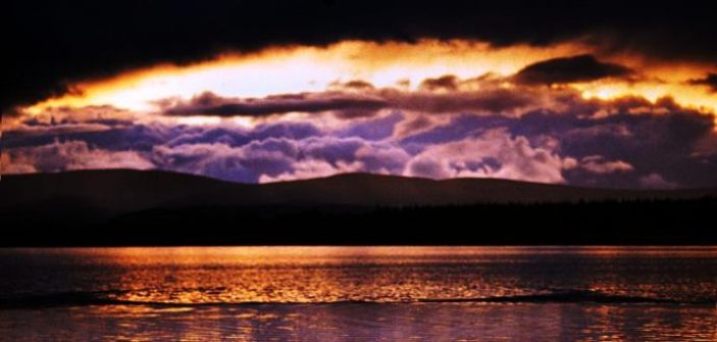
|
|
 |
 |
|
|
 |
 |
|
|
 |
 |
 |
 |
|
|
 |
 |
|
 |
 |
|
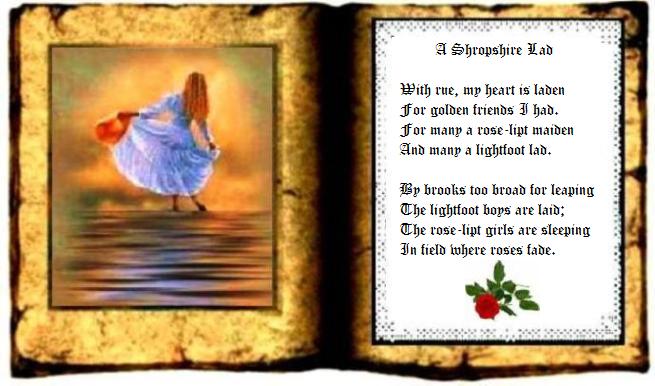
A.E.Houseman
Born: 3/26/1859
|
|
 |
 |
|
|
 |
 |
|
|
|
 |
 |
 |
 |
|
 |
 |
|
Home was home then, my dear, full of kindly faces,
Home was home then, my dear, happy for the child.
Fire and the windows bright glittered on the moorland;
Song, tuneful song, built a palace in the wild.
Now, when day dawns on the brow of the moorland,
Lone stands the house, and the
chimney-stone is cold.
Lone let it stand, now the friends are all departed,
The kind hearts, the true hearts, that loved the place of old.
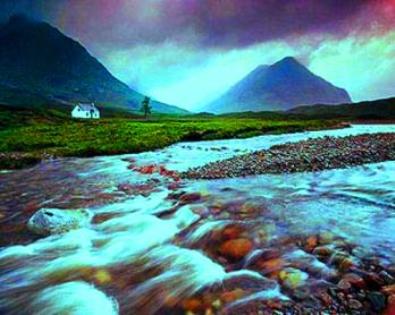
Spring shall come, come again, calling up the moorfowl,
Spring shall bring the sun
and rain, bring the bees & flowers;
Red shall the heather bloom over hill and valley,
Soft flow the stream through
the even-flowing hours;
Fair the day shine as it shone on my childhood –
Fair shine the day on the house with open door;
Birds come and cry there and twitter
in the chimney -
But I go forever and come again no more.
Robert Louis Stevenson
(Born 11/13/1850 – Edinburgh)
|
|
 |
 |
|
|
 |
 |
|
|
 |
 |
|
 |
 |
|
 |
 |
For Always, Forever, Together.
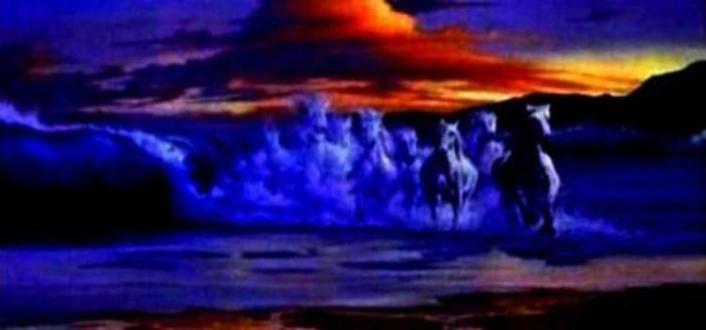
|
|
 |
 |
|
|
 |
 |
gjdoxfjdjdxj
gjdoxfjdjdxj
gjdoxfjdjdxj
 |
 |
|
 |
 |
|
Recipe for Greatness
Zane Grey
To bear up under loss, To fight the bitterness of defeat
And the weakness of grief, To be victor over anger,
To smile when tears are close,
To go on when it would seem good to die,
To look up with unquenchable faith in something evermore.
That is what any man can do,
And so be great.
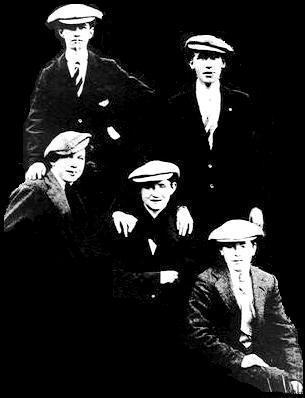
This site is dedicated to such greatness-the Crossans,
my family from the “Gorbals” and Castlemilk
Glasgow, Scotland.
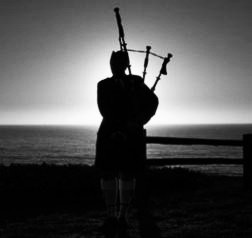
|
|
 |
 |
|
|
 |
 |
gjdoxfjdjdxj
gjdoxfjdjdxj
 |
 |
|
 |
 |
|
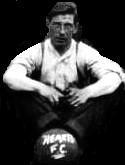
Brave Hearts cut down in their prime…
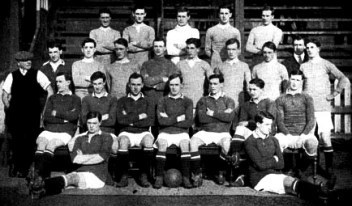
World War I - Sir George McCrae's Battalion or "McCrae's Own"
or, locally, as "Hearts Battalion". The entire Heart of Midlothian first team
joined up in November 1914.
Hearts were top of the Scottish League at the time.
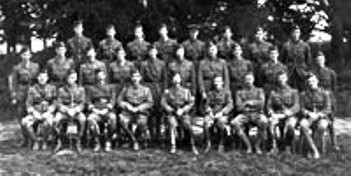
..

Alex Massie on Tynecastle's bravest and saddest season in
the Great World War :
The names
Patrick ‘Paddy’ Crossan, Tom Gracie and Harry Wattie do not echo through football history. They are not remembered
the way the Manchester United players who
died at Munich or the Torino
team that perished at Superga have been immortalised as
the melancholy
embodiment of that most wistful feeling: what might have been. Outside Edinburgh,
Crossan and his team-mates have been all but forgotten.
They will, however,
be remembered.
No club sacrificed
more in the First World War than Heart of Midlothian. Sixteen players from the club joined up, most of them enlisting in the
16th Battalion of Royal Scots, the oldest infantry regiment in the army and nicknamed 'Pontius Pilate's Bodyguard'. Seven
members of the first team were killed in action.

Sir George McCrae,
a popular figure in the city, announced that he would raise a battalion himself - the 16th Royal Scots - and boasted, furthermore,
that it would be full within seven days. The Hearts players led the way. Sixteen enlisted immediately and a further five were
declared unfit to serve. 'McCrae's Battalion', as it came to be known, was the original sportsman's battalion.
The players'
service attracted others to the colours. Hundreds of supporters responded to
an appeal from
manager John McCartney: 'Now then, young men, as you have followed the
old club through
adverse and pleasant times, through sunshine
and rain, roll up in your hundreds for King and Country, for right and freedom. Don't let it be said that footballers
are shirkers
and cowards. As the club has borne an honoured name on the football field,
let
it go down in history that it also won its spurs on the field of battle.'
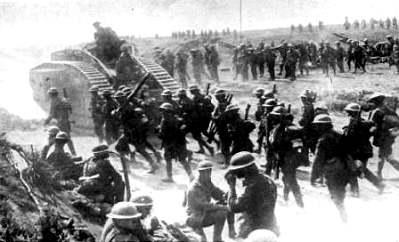
The battalion
suffered 229 casualties on the first day of the battle of the Somme with another 347 wounded. That the 16th Royal Scots made greater inroads into the
German line than any other battalion that day seems a paltry consolation.
Among the dead
was Harry Wattie, arguably the best inside-forward in Scotland.
No trace of his remains has ever been found. He had already outlived some of his team-mates: Gracie died in October 1915.
Crossan was gassed and never recovered his health before his death in 1933.
“They had put themselves into a position of winning the league title,
yet many were asking why play football when your countrymen
are dying a few miles away just over the channel?”
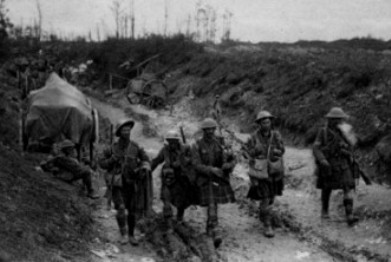
“The bravest sportsmen Scotland has ever known.”
McCrae’s Battalion
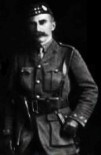
"Particular attention is paid to the Hearts FC men :
Patrick Crossan who claimed to be the handsomest man in the world
‘he could pass a ball but never pass a mirror'
-’the legend went;"
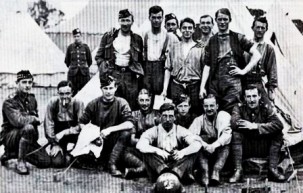
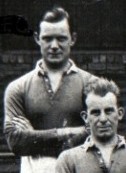
|
|
 |
 |
|
|
 |
 |
gjdoxfjdjdxj
|
|
 |
 |
 |
 |
|
 |
 |
|
|
 |
 |
|
 |
 |
|
|
When you are old and grey and full of sleep,
And nodding by the fire, take down this book.
And slowly read, and dream of the soft look
Your eyes had once, and of their shadows deep;
How many loved your moments of glad grace,
And loved your beauty with love false or true.
But one man loved the pilgrim soul in you,
And loved the sorrows of your changing face;
And bending down beside the glowing bars;
Murmur, a little sadly, how love fled
And paced upon the mountains overhead
And hid his face amid a crowd of stars.
William Butler Yeats
Irish poet & playwright
|
|
|
|
 |
 |
|
|
 |
 |
|
|
|
 |
 |
|
|
 |
 |
 |
 |
|
 |
 |
|
 |
 |
|
|
| MY DEAREST LOVE |
|
|
| MY MOTHER, ROSEMARY CROSSAN ~ GLASGOW, SCOTLAND |
Yet keenest powers to see and hear
Seem'd in her frame residing:
Before the watch-dog prick'd his ear,
She heard her lover's riding;
Ere scarce a distant form was kenn'd,
She knew and waved to greet him,
And o'er the battlement did bend
As on the wing to meet him.
He came-he pass'd-a heedless gaze,
As o'er some stranger glancing;
Her welcome, spoke in faltering phrase,
Lost in his course's prancing;
The castle-arch, whose hollow tone
Returns each whisper spoken,
Could scarcely catch the feeble moan
Which told her heart was broken.
Sir Walter Scott
(Born 8/15/1771 - Edinburgh)
| MORE OF A BIG BROTHER THAN AN UNCLE, |
|
|
| RONALD CROSSAN ~ GLASGOW |
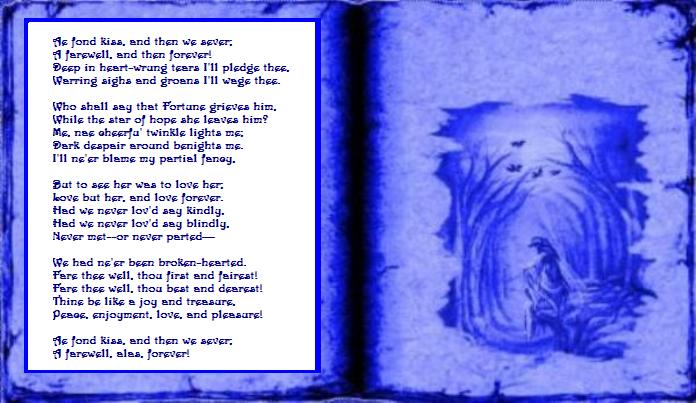
Robert Burns
(Born 1/25/1759 - Alloway, South Ayrshire)
|
|
|
 |
 |
|
|
 |
 |
|
|
 |
 |
|
 |
 |
|
|
 |
 |
|
 |
 |
|
Simple Together
Alanis Morissette
I thought we'd be simple together,
And be happy
together.
I thought we'd be healing together
And be adventurous together.
I thought we'd be growing together.
You've been my Golden Best Friend,
And thought we'd be sexy together.
I thought we'd be evolving together,
And be Family together.
But I was sadly mistaken.
Thought we'd be exploring together
And be inspired together.
I thought we'd be on Fire together.
You've been my Soulmate.
I remember you the moment I met you.
With you,I knew God's
face was handsome.
I thought we'd be limitless together.
Thought we'd have children together,
And be Family together,
But I was sadly mistaken.
A wave of yet more tender joy escaped
from his heart
and went coursing in warm flood along
his arteries.
Like the tender fire of stars moments
of their life together,
that no one knew for would ever know
of, broke upon
and illumined his memory.
He longed to recall to her those moments,
to make her forget the years of their
dull existence together
and remember only their moments of ecstasy.
For the years, he felt, had not quenched
his soul or hers.
Their children, his writing, her household
cares had not
quenched all their souls' tender fire.
In one letter that he had written to
her then he had said:
"Why is it that words like these seem
to me so dull and cold?
Is it because there is no word tender
enough to be your name?"
Like distant music these words that
he had written years before
were borne towards him from the past.
| MY BROTHER AND BEST FRIEND |
|
|
| BRETT |
James Joyce
(Irish Novelist - Dublin
1882-1941)
|
|
 |
 |
|
|
 |
 |
|
|
|
 |
 |
|
|
 |
 |
|
|
 |
 |
|
|
 |
 |
 |
 |
|
 |
 |
|
|
|
|
| ROSEMARY AND BRETT - LOCH LOMOND |
There blooms a flower for me, Tis the
Bluebell
On Scotland's grassy lea, Where from
the dark,
up springs the lark. The rising sun to see!
Where afar my steps have been,
Blue skies charm the eyes,
And the earth is ever green.
Yet dwelt my heart 'mid Scotland's
glen.
Where aye in thought was seen,
the Bluebell, Amid the bracken green,
And brighter far than sun or star,
The eyes of bonnie Jean!
What
was the fair lady’s game?
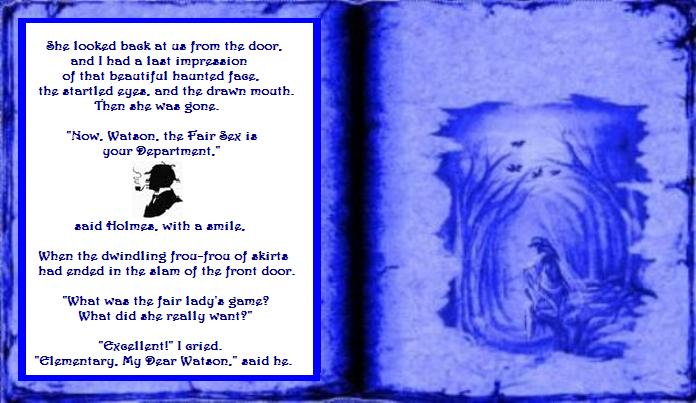
The Return of Sherlock Holmes (1905)
Sherlock Holmes
Sir Arthur Conan Doyle
(Born 5/22/1859 - Edinburgh)
|
|
|
 |
 |
|
|
 |
 |
 |
 |
|
 |
 |
|
|
 |
 |
|
 |
 |
|
|

In Development-This Site Is Currently A Work In Progress.
Music
Accompanies Each Section. Best Viewed With Internet Explorer.
Fonts Used on this Website: Harrington/Blackadder/Vivaldi/Broadway
Bradley Hand/Edwardian/Matura/Chiller/Monotype Corsiva/Olde English.
A WEE BIT SLOW...
Due to quantity/size of Hi-Res photos used–picture may not appear.
Just click on page/section again. Cheers! Miss Shrew aka Karrie

A Crossan Woman
Created 5/14/2006
(Mother's Day)
By Ms. Shrew
|
|
|
|
 |
 |
|
|
 |
 |
|
|
|
 |
 |
|
|
 |
 |
 |
 |
|
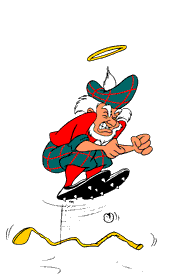
|
LIFE should NOT be a JOURNEY to the GRAVE with the intention of arriving SAFELY in a Well-Preserved & Attractive BODY, but rather to,
SKID IN SIDEWAYS
JACK DANIELS in one hand,
Chocolate-coated STRAWBERRIES in the other, CIGARETTE hanging out of your mouth ~ BODY Thoroughly USED Up, TOTALLY WORN OUT, and SCREAMING,
WOO! HOO! HELLUVA RIDE!
|
|
|
 |
 |
 |
 |
|
 |
 |
|
fhdjxk
|
|

Proceed with CAUTION!
Possible SLOGGING after SNOGGING *
may occur with
ME
And it AIN’T A
PRETTY SIGHT!!
KATE THE SHREW

|
fhdjxk
|
|
 |
 |
|
|
 |
 |
 |
 |
|

|
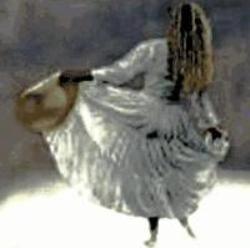
PART
I of 7
(MUSIC
VIDEO)
|

|
|
 |
 |
 |
 |
|
 |
 |
| |
|
|
| |
fhdjxk
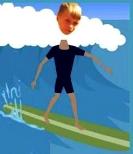
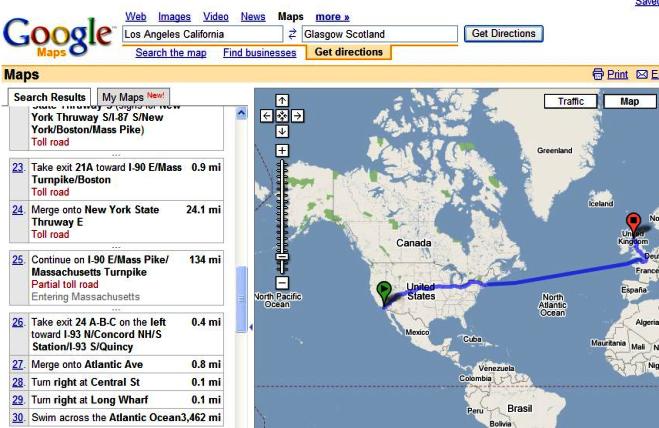
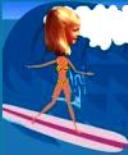
THANKS FOR SURFING BY!
HOPE YOU ENJOY THE RIDE!
DAFTIE MERCUN WUMMIN
|
|
| |
|
|
|
 |
 |
|
|
 |
 |
|
|
 |
 |
|
 |
|
 |
 |
|
 |
 |
|
| CASTLEMILK |
|
|
| YOUNG HELLRAISERS |
| LONDONDERRY |
|
|
| BRETT BRAXTON |
| ROBBIE & ROSEMARY |
|
|
| KARRIE & BRETT |
| ONE OF THE GREAT 'HEARTS' |
|
|
| GREAT UNCLE, PATRICK CROSSAN |
|
|
|
|
 |
 |
|
| |
|
 |
 |
 |
 |
|
|
|
| GLASGOW - ARMADILLO BUILDING |
|
| |
|
 |
 |
 |
 |
|
 |
 |
|
Farewell
To the land where the clouds love to rest,
Like the shroud of the dead on the
mountain’s cold breast;
To the cataract’s roar where the eagles reply,
And the lake her lone bosom expands to the sky.
Sir Walter Scott

|
| HEBRIDES |
|
| |
|
 |
 |
|
|
 |
 |
 |
 |
|
 |
 |
|

|
|
A WEE BIT SLOW...
With some of the Hi-Res photos
Just click on page/section again.
Mòran Taing! Slàinte Mhòr Agad!
Music
Accompanies Each Section.
CHEERS!
A COOL CROSSAN CAT!
|
|
 |
 |
|
|
 |
 |
|
 |
|
|
|
 |
|
 |
 |
|
 |
 |
|
Caíne amrae lasin
mKarrie
ina churchán tar
muir nglan;os mé im charput do
chéin,is mag scothach
imma-réid.
The Journey
Of Bran To The Isle Of Women
(IMMRAM
BRAIN MAIC FEBAIC)
| CROSSAN CLAN ~ 5 OF THE 9 BROTHERS & 2 SISTERS |
|
|
| CROSSAN LADS ~ THE HELLRAISERS |

|
|
 |
 |
|
|
 |
 |
 |
 |
|
 |
 |
|
| TROSSACHS, SCOTLAND |
|
|
| KARRIE BRIGITTE |
|
|
Celtic Goddess
Brigit or Bridget
Goddess of Fire, Fertility,
the Hearth,
All
Feminine Arts & Crafts, Martial Arts,
Inspiration, Learning, Poetry,
Divination, Prophecy, Love,
Creativity, Witchcraft And Occult
Knowledge.
The Celtic Goddess who rules
over
Imbolc,
The Festival of the Maiden -
A blonde-haired maiden
standing in a tree.

|
| TROSSACHS |
|
|
 |
 |
|
|
 |
 |
 |
 |
|
A Brief History of Castlemilk
There is no castle in Castlemilk now,
though many people still remember Castlemilk House,
a stately old mansion built around Cassilton Tower, which was started in 1460 on the site
of a 13th century castle. However it was pulled down by Glasgow Corporation in 1969 like so many other buildings in Glasgow
at this time.
The main gateway to the house can still be seen at the junction of
Mill
Street and Croftfoot Road.
The back gates would have stood opposite the health center in Dougrie Terrace, but have long since gone.
Castlemilk House, about 1870. (From Virtual Mitchell Library)
Archaeologists have discovered artefacts from early civilizations
nearby - Bronze Age graves, an Iron Age dug-out boat and Celtic cairns in the area where Castlemilk now stands. Previously
there was found evidence of a Pictish camp where the 13th green of Cathkin Braes Golf Club now is, though no evidence of these
early inhabitants of the area is now apparent.
The lands known as
Cassilton of Carmunnock were bought by the Stuarts in 1460 and it is here they started construction
of Cassilton Tower. The Stuarts brought the name Castlemilk with them. The family owned
estates in Dumfriesshire, south of Lockerbie, named after their castle beside the River Mylk.
(Their Castlemilk Estate also gave its name to Britain’s rarest breed of sheep, the Castlemilk Moorit!) When the family
sold their lands in the south and moved their main residence to the area known as Cassilton in 1579, they changed its name
to Castlemilk. Cassilton Tower’s main claim to fame was that Mary, Queen of Scots
lodged here the night before the battle of Langside, in 1568.
By the 17th and 18th
centuries the increased activity in the area is reflected in the fact that there were 3 mills nearby and numerous quarries
to provide material for house building. A report in 1796 described 1,500 acres of poor quality farm land, requiring a lot
of improvement by the local landowners. Towards the late 18th century villagers from nearby Carmunnock were walking down the
hillside here to bring the dirty linen from big houses in grimy, industrial Glasgow, to wash and dry in the clean water and
air away from the city.
The Stuarts still owned the land at the time of the First World War, with tenant
farmers maintaining much of it. During this war soldiers in their training were encamped on Cathkin Braes, going on route
marches through the area. Before dying in 1938, the last Stuart Laird of Castlemilk sold the land to Glasgow
Corporation, which planned a new housing development on the site. With the onset of the Second
World War these plans were put on hold, and Castlemilk House was used for evacuees. After the war the building
continued to be used as a children’s home until closed in 1968. Farmland here overlooking Glasgow also provided
a place for searchlights and anti-aircraft artillery. Later in the war this was used as a German Prisoner of War camp. Castlemilk housing estate was developed
from 1953 as one of four developments on the outskirts of the city. Families who were displaced from inner city slum clearances
were moved to this new public sector housing. There were open spaces, fresh air and bathrooms in the houses all so different
from the overcrowded tenements many people came from. Soon, however, the area began to develop the same problems as the other
peripheral ‘schemes’. Poor initial planning meant isolation and a lack of such basic amenities as schools and
shops.

Flats under construction, Dougrie Place
1962. (From Virtual Mitchell Library)
Over the next 20 years the area gradually declined. The housing was soon in need of upgrading and was poorly maintained.
The decline of local industries in the Glasgow area led to a rise in unemployment and social problems that follow poverty
developed. People began to move away and between 1971 and 1991 the population of 37,000 fell by almost a half.
However, from the
early 1980’s much work has been done. A regeneration strategy has focused on improved housing and the development of
local arts. An active network of community groups has achieved much and Cooperative
housing associations have done a lot to regenerate the housing, an active project that continues today. Grants allowed the
construction of some improved amenities for local people such as a swimming pool, sports center, shopping arcade and community
centers. New schools, training facilities and sports amenities continue to be built and many people who have not seen Castlemilk for 5 or 10 years might hardly recognize the place!
|
|
 |
 |
 |
 |
|
|
|
Gorbals through time -
A brief history from the
14th to the 21st century
The Very Beginning
The Gorbals was originally a single-street
village. It grew up around the River Clyde’s most westerly crossing point - a bridge completed in 1345 by Bishop Rae
of Glasgow.
Five years later, a leper hospital dedicated to St Ninian,
the name of a terrace today, helped plague victims from the city across the river.
After the Reformation, in 1579, the church sold the land
to George Elphinstone, a Glasgow merchant. His tower house
in the village Main Street survived in one form or
another until the 19th century.
The magistrates of the City of Glasgow
received a Crown Charter in 1650 to buy the land now occupied by Kingston,
Tradeston, Laurieston and Hutchesontown. The village, thought to be mainly thatched houses lived in by maltmen and brewers,
was extensively damaged in 1748 by fire.
The smallest parish in Scotland
The Parish of Gorbals was formed in 1771 from a small
part of Govan Parish. Probably the smallest in Scotland,
the parish tightly surrounded the old village, and its burial ground you can still see today.
At this time its population was about 3,500 and it grew
by another 3,000 over the following twenty years.
The area to the west of the line of the present Eglinton Street as far as West
Street was transferred to the Trades’ Houses in 1790, the origin of Tradeston. The rest of
the area to the east became the property of Hutcheson’s Hospital.
Towards the end of the 1700s the village’s main
industry was weaving. There were 556 looms in use in the area. Other trades were there too - gunsmiths, nailers, shoemakers,
tailors, wrights and cotton spinners. Around 60 public houses supplied ‘refreshment’.
Govan Colliery in the countryside to the south employed
200 men and used a steam engine to raise coal the 600 feet to the surface.
Into the 1800s and 1900s
After the land transfers, the area experienced a time
of rapid growth. The patrons of Hutcheson’s Hospital promoted the development of Hutchesontown with its main streets
Adelphi Street and Hospital Street.
To the west, Laurieston developed as a fashionable suburb
on land sold to James Laurie. Its streets were named after English nobility, starting with Carlton Place along the riverbank in 1802.
The Industrial Revolution changed the character of the
area. Govan Ironworks, better known as Dixon’s Blazes,
appeared next to the colliery. Buildings were demolished to allow for railway lines, elevated on stone and brick arches. A
grid-iron layout of four-story tenements grew up through the 1900s to house local factory and cotton mill workers.
Glasgow City Council took over the administration of the
Gorbals in 1846 - its City Improvement Trust demolished Main Street,
including Elphinstone Tower,
in the 1870s.
Gorbals Cross became its new focal point complete with
clock tower and underground public conveniences. The architecture of Alexander ‘Greek’ Thomson also appeared in
the area.
The Gorbals developed into a busy place. Its wide streets,
such as Crown Street and Cumberland Street, bustled with commercial activity.
By the 1930s its 90,000 population was served by 1,000
shops and 130 pubs.
It had become a true community with
a mix of a succession of immigrant groups: Highlanders, displaced by sheep, land confiscation and poverty; Irish fleeing famine;
and Jews leaving behind persecution in Europe.
Urban decay
and high-rise solutions
During the inter-war period, as with many other inner city areas throughout Britain, it all started to break down. Building decay, overcrowding
and poor sanitation got worse and little was done to address the problems. These became widespread in the Gorbals.
Government legislation after the Second World War indicated
a general desire to turn this around. It proposed the comprehensive redevelopment of large chunks of cities and towns.
Targeting its huge housing problem, Glasgow Corporation’s
own redevelopment program was ambitious. It earmarked 29 areas across the city as Comprehensive Development Areas (CDAs) -
Hutchesontown, with part of the Gorbals, was to be the first.
By the early 1950s, of Glasgow’s 1,085,000 population, an estimated 600,000 needed rehousing. However, the
need to reduce excessive population densities called for imaginative solutions.
Within the city boundaries, the CDAs could only accommodate
250,000 people. Estates on the edge of the city, Castlemilk, Drumchapel and Easterhouse, could take another 100,000. Topography,
and ‘green belt’ to avoid urban sprawl, restricted greater numbers.
So, 250,000 were expected to move outside the Glasgow area altogether. New towns were created: first East Kilbride
and Glenrothes, followed by Cumbernauld, Livingston and Irvine.
The extra expense of building high-rise was justified
as it seemed the only way to accommodate the 250,000 people. They estimated two-story development on the same area would only
house 75,000.
Detailed surveys in Hutchesontown showed that residential
property, some not very old, was in poor condition in terms of structure and sanitation. The system of factoring had broken
down and years of private landlord neglect had made things worse.
Flats had also been subdivided in many cases. The population
density was 458.6 persons per acre compared to a modern suburban density of 30 persons per acre. Imagine that with only one
toilet for every three houses!
The Secretary of State for Scotland approved the plans for the CDA in February 1957. With Queen Elizabeth Square high-rise blocks at its centre, the plans accommodated 10,000
people - significantly less than the previous 27,000 in the same area.
Urban decay revisited in the 1980s
By the 1980s, the area had an air of neglect and dilapidation.
The redevelopment of
the area had stopped and the effects of poor building specification were apparent.
Empty ground with single-story street corner pubs remained
after the demolition of tenements. Deck-access blocks lay uninhabited and the area gave a dismal and depressing impression.
The population of the area was 85,000 in 1931. By 1952,
this was down to 68,000. In the 1980s it had crashed to 10,000. Shops were difficult to keep going, schools were relocated
or closed, and places of worship closed their doors.
In 1980, after a great battle and rent strike, the council
bowed to tenant pressure to rehouse remaining tenants from flats in Crown Street
riddled with condensation and water penetration. Options to refurbish were dismissed and the 759 deck-access flats were demolished
in 1987.
Once again, the area was in dire
need of rebirth & regeneration.

|
|
 |
 |
 |
 |
|
 |
 |
|
|
|
Origin of Irish Immigration - Scotland
Rural
de-industrialization and changing patterns of family demography in Ireland
were just as important in prompting emigration as the more familiar pressures of poverty and famine. Whilst accepting that
Scotland was merely a temporary haven for some Irish emigrants bound for North America, that Irish migration to Scotland displayed
one significant characteristic which set it apart from general Irish emigration patterns in that the vast majority of Irish
emigrants to Scotland, and especially Clydeside, originated in the ancient nine-county province of Ulster. Indeed, this trend
was as evident during the depressed years of the 1930s as it had been during the early years of the nineteenth century concluding
that the Irish movement to Scotland provides
a particular example of a general case of rural-urban migration.
Irish
Catholic identity in Scotland
Most
Irish emigrants were Roman Catholics. Whilst noting the difficulties - including the hostility of mainstream society - which
Irish Catholics faced in acquiring an identity that would sustain them in their new environment, there were a range of factors which gradually enabled this immigrant community to interact with Scottish
society. These included the success of Glasgow Celtic; the emergence of the Labor Party after 1906; the absence of deep-seated
sectarian rivalries outside Clydeside; the comradeship of the 1914-18 war; the 1918 Education (Scotland) Act; the creation
of the Irish Free State; and re-housing schemes in the late-twentieth century, notably in the Gorbals,
'the hub of Glasgow Catholic life up to the 1950s'. Irish Catholic identity within a Scottish context it is worth noting that Scottish society was also changing
during the same period and that the elasticity of a developing concept of 'Scottishness' made it progressively easier for
Irish immigrants and their descendants not only to be accommodated but also to retain an Irish Catholic identity which had
been built on the rock of adversity.
Aspects of the Irish Catholic Role in Labor Movements and
Radical Politics in Scotland.
The
processes through which a moderate conservative though hardly uncritical attitude towards contemporary society emerged among
the Catholic Irish in Scotland. In questioning
some traditional socialist myths about the incapability of Irish Catholics to do anything to advance their own economic interests,
a cogent explanation of the ways in which Catholicism remained a counter-culture to both capitalism and socialism, is that
the Catholic Irish, who could be both revolutionary and reactionary at the same time, and who possessed little faith in political
theorists, did not see their economic salvation in the politics of the left; rather, as part of a Catholic international and
even an Irish ethnic international, they looked to themselves, to their ethnic identity and faith, for solutions, in part
through self-help organizations supported by wealthy Catholic patrons, both clerical and lay.
In studying the contribution of Irish issues to Scottish radicalism, it should be noted that this contribution, like
the relationship of Irish immigrants to Scottish society, was an ambivalent one. Yet it can be shown - with reference to the
Irish contribution to early nineteenth century radicalism, to late nineteenth century trade unionism, and to the growth of
the Labor party tradition during the 1920s and 1930s - that Irish issues were an intrinsic and evolving element in the making
of the Scottish radical tradition and that Irish interests had their own validity and justification and were accommodated
within a developing Scottish radicalism.
|
|
 |
 |
|
| |
|
 |
 |
|
 |
|
|
|
|
|
|
|
 |

